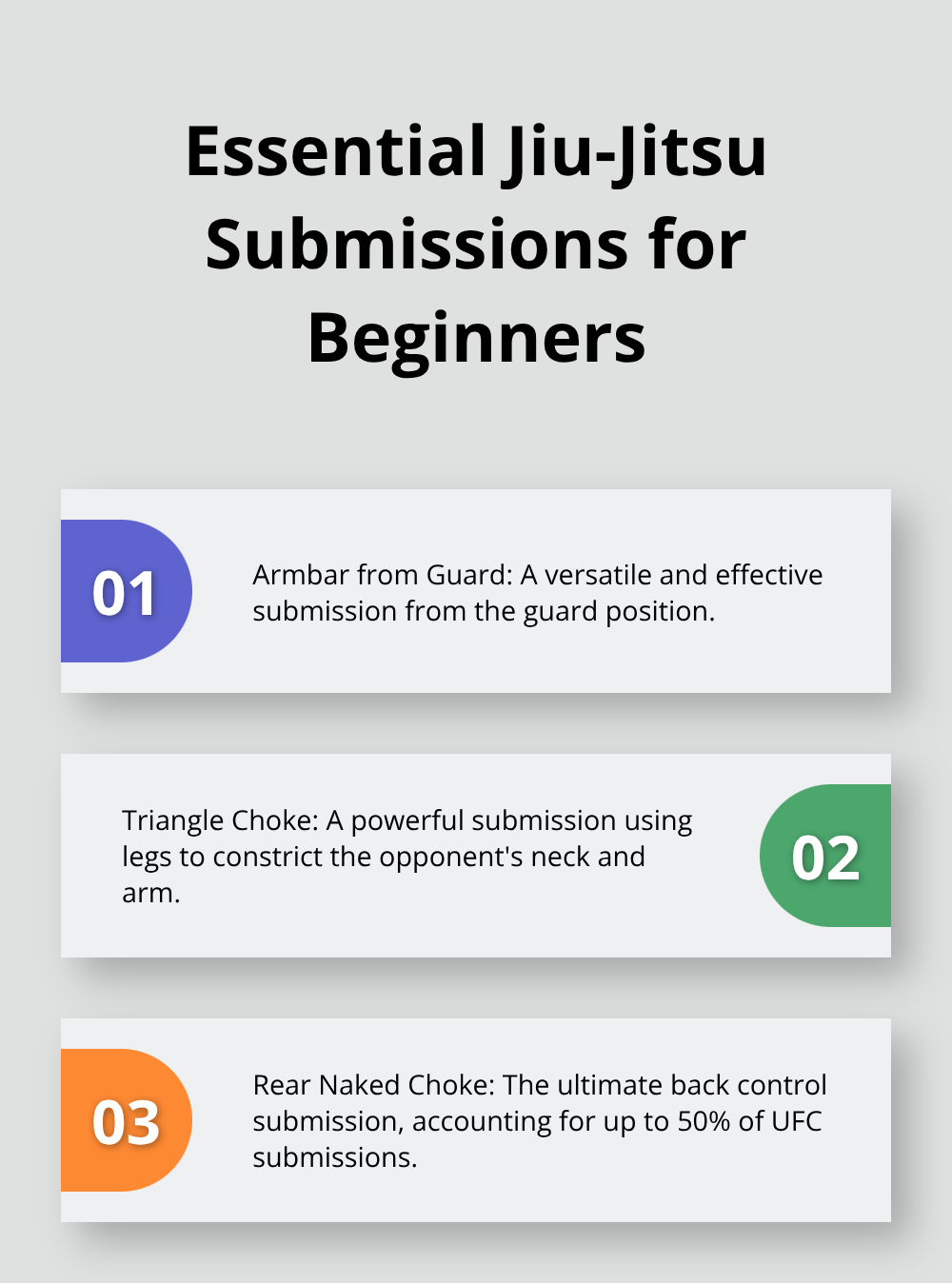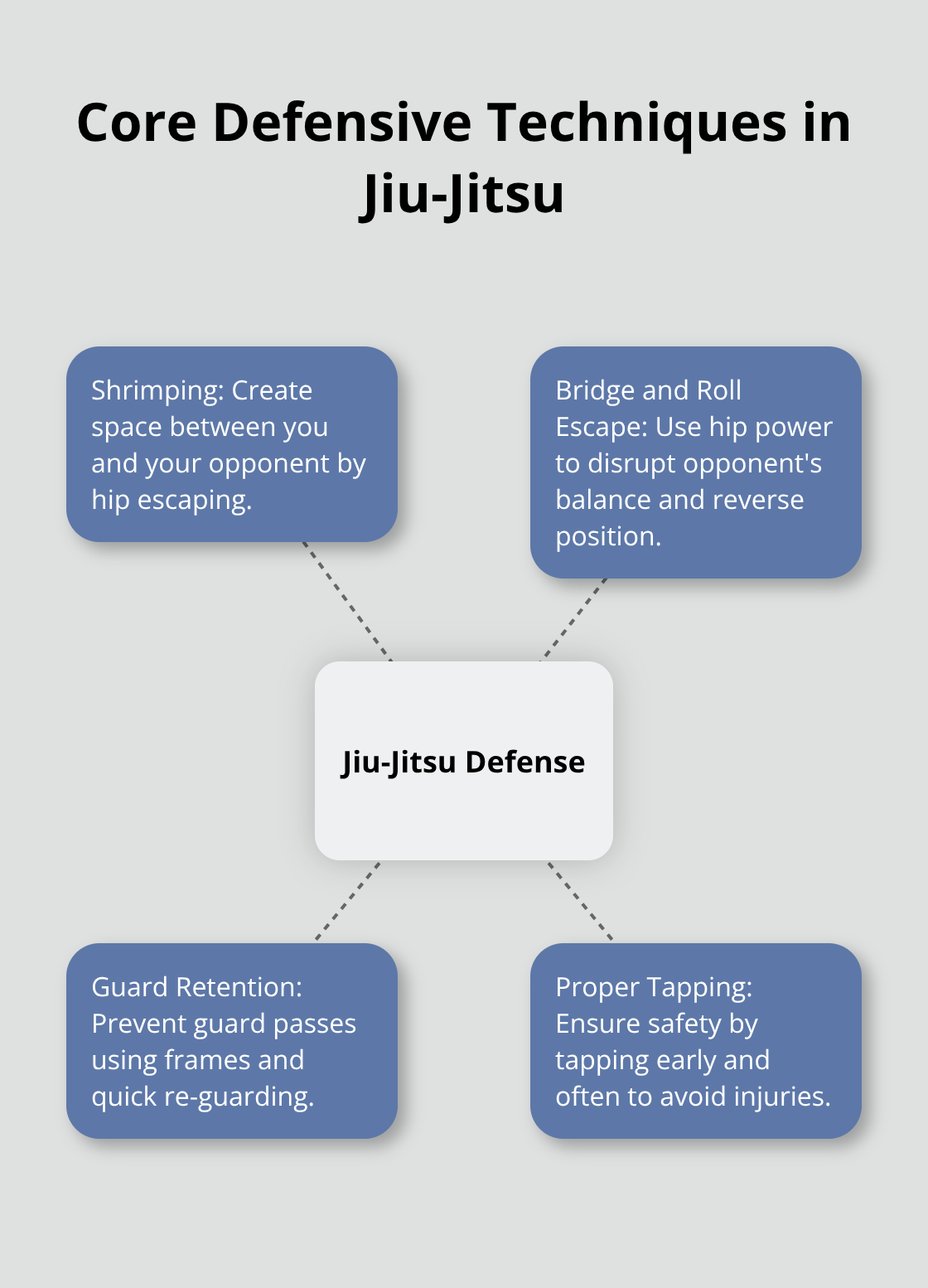At Jiu Jitsu, we understand the importance of mastering the fundamentals. This blog post will guide beginners through the essential Jiu Jitsu basics, covering key positions, submissions, and defensive techniques.
Whether you’re stepping onto the mat for the first time or looking to refine your skills, these foundational elements will set you on the path to success. Let’s explore the building blocks that form the core of Brazilian Jiu Jitsu and help you develop a solid foundation for your martial arts journey.
Mastering Basic Jiu-Jitsu Positions
At Souza Grappling Co., we emphasize the importance of mastering basic positions in Brazilian Jiu-Jitsu. These fundamental positions form the backbone of your grappling game and are essential for both offense and defense. Let’s explore the four key positions you’ll encounter on the mat.
The Mount Position
The mount is a dominant position where you sit on your opponent’s torso, facing their head. In the full mount position, the top grappler is sat astride the opponent’s torso, controlling the opponent with his bodyweight and hips. It is a very strong position that allows you to strike or submit your opponent while limiting their movement. To maintain mount, keep your hips low and your knees tight against your opponent’s sides. Practice transitions between high and low mount to improve your control and adapt to your opponent’s escape attempts.
The Guard Position
Guard is a defensive position where you lie on your back with your opponent between your legs. It’s unique to Jiu-Jitsu and offers numerous attacking opportunities despite being underneath your opponent. To play an effective guard, control your opponent’s posture by manipulating their arms or head. Try different guard variations (closed guard, open guard, and butterfly guard) to find what works best for your body type and style.
Side Control Dominance
Side control is a pin position where you lie perpendicular to your opponent, across their torso. This excellent position allows you to apply pressure and set up submissions. When in side control, focus on keeping your weight on your opponent’s chest and maintaining head control. Practice switching sides and transitions to mount or knee-on-belly to enhance your positional control.
Back Control Supremacy
Back control is often considered the ultimate position in Jiu-Jitsu. From here, you can apply powerful chokes while your opponent has limited defense options. To maintain back control, use your hooks (feet inserted between your opponent’s thighs) and stay tight to their back. Improve your hand fighting skills to prevent your opponent from protecting their neck and to set up your submissions.
Drilling for Success
Mastery of these four basic positions will significantly improve your Jiu-Jitsu game. At Souza Grappling Co., we dedicate ample time to drilling these positions in our classes. Our approach ensures that students build a solid foundation for their Jiu-Jitsu journey. Consistent practice and attention to detail are key to becoming proficient in these positions.
As you become more comfortable with these fundamental positions, you’ll find yourself better equipped to execute various submissions. In the next section, we’ll explore essential submissions that every beginner should learn to complement their positional knowledge.
Essential Submissions Every Beginner Should Master
At Souza Grappling Co., we believe that mastering a few key submissions will build confidence and effectiveness on the mat for beginners. While Brazilian Jiu-Jitsu offers countless submission techniques, focusing on a core set allows you to develop a solid offensive game. Let’s explore four essential submissions that every beginner should prioritize in their training.
The Versatile Armbar from Guard
The armbar from guard is a fundamental submission that offers versatility and effectiveness. To execute this technique:
- Control your opponent’s posture
- Isolate their arm
- Swing your hips to create the proper angle
Practice transitioning smoothly from closed guard to the armbar position, and focus on maintaining control throughout the movement. A study by BJJ Heroes shows that armbars account for approximately 25% of all submissions in high-level competitions (highlighting their importance in your arsenal).

Mastering the Triangle Choke
The triangle choke is a powerful submission that uses your legs to constrict your opponent’s neck and arm. To set up the triangle:
- Control your opponent’s posture
- Create the proper angle
- Pull down on your opponent’s head while pushing your hips upward to tighten the choke
Try different entries to the triangle, such as from guard or during scrambles, to increase your chances of successfully applying this submission in live rolling.
The Rear Naked Choke: A Game-Ender
Once you’ve achieved back control, the rear naked choke becomes a high-percentage submission option. To apply this choke effectively:
- Maintain proper back control with your hooks in place
- Slide one arm under your opponent’s chin
- Lock in the choke by grabbing your bicep with your other hand
- Squeeze with your arms while expanding your chest to maximize pressure
The Rear-Naked Choke continues to reign supreme, accounting for 32-50% of all UFC submissions.
The Kimura: A Versatile Attack
The Kimura lock is a powerful shoulder lock that you can apply from various positions, making it an essential tool for beginners. To execute the Kimura:
- Isolate your opponent’s arm
- Create a figure-four grip
- Apply proper body positioning and leverage to maximize effectiveness
Practice applying the Kimura from different positions such as guard, side control, and even standing.

At Souza Grappling Co., we emphasize regular drilling of these submissions to build muscle memory and improve execution. Consistent practice and attention to detail are key to mastering these techniques. As you become more comfortable with these fundamental submissions, you’ll find yourself better equipped to handle various situations on the mat. In the next section, we’ll explore essential defensive techniques that complement your offensive arsenal and help you stay safe during training and competition.
Defensive Techniques and Escapes in Jiu-Jitsu

The Power of Shrimping
Shrimping (also known as hip escaping) forms the backbone of Jiu-Jitsu defense. This technique creates space between you and your opponent. To practice shrimping effectively:
- Lie on your back with bent knees
- Push off with your feet while turning onto your side
- Use your top leg to frame against your opponent
- Slide your hips away to create distance
Try to perform at least 50 repetitions per training session to improve your proficiency. (This movement will become second nature with consistent practice.)
Bridge and Roll Escape Mastery
The bridge and roll is a technique that uses the body’s ability to create space by bridging using the hips. Execute this escape by:
- Forcefully bridge your hips up to disrupt your opponent’s balance
- Grab your opponent’s arm or gi on the escape side
- Roll to the side, using the bridge momentum to come on top
Practice this escape regularly with a training partner. Start with a static mount position and increase resistance as you improve.
Guard Retention Techniques
Guard retention prevents your opponent from passing your guard and gaining a dominant position. Improve your guard retention by:
- Keep your elbows close to your body to prevent arm drags
- Use your legs to create frames and maintain distance
- Practice re-guarding drills to quickly recover your guard if it’s broken
Dedicate at least 10 minutes of each training session to guard retention drills. Work with various partners to experience different passing styles and improve your defensive instincts.
The Art of Proper Tapping
Tapping is a fundamental safety technique in Jiu-Jitsu. Learn to tap early and often to prevent injuries. To tap effectively:
- Use your hand to tap your opponent or the mat repeatedly
- Tap verbally if your hands are trapped
- Tap before the submission becomes painful or dangerous
Practice tapping in various positions during training to make it a natural response. This habit will keep you safe and allow you to train consistently.
Final Thoughts
Mastering Jiu Jitsu basics forms the foundation for success on the mat. We explored essential positions, submissions, and defensive techniques that every beginner should focus on. These fundamental skills will set you up for long-term growth and improvement in Brazilian Jiu-Jitsu.
Consistent practice of these techniques will ingrain them into your muscle memory. Regular drilling and live rolling sessions will solidify your understanding and execution of these core moves. Progress in Jiu-Jitsu takes time, so approach your training with patience and persistence.
For those ready to start or continue their Jiu-Jitsu journey, Souza Grappling Co. offers a comprehensive training experience. Our expert instructors and supportive community provide the guidance needed to build a strong Jiu-Jitsu foundation (and beyond). Whether your goal is self-defense, fitness, or competition, we’re here to help you achieve it.




